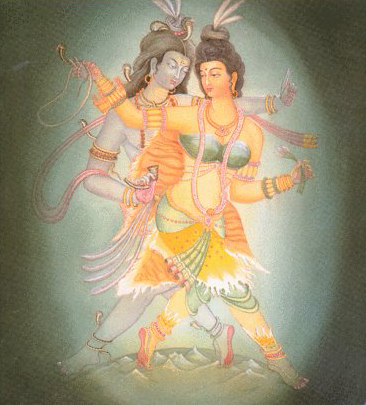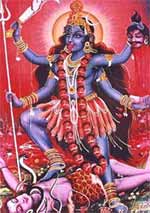

Shakti and Shiva Kali
Based on Rambachan chapter in Raines and Maguire
Larger theme/question for us with all the religions – Is there a causal relationship between/among development, culture, religion?
Here, for example, they argue that Brahman (sexist) culture predates/colors Hinduism
18 – interesting parallel with Marxist analysis of working class mimicking the tastes/customs of the bourgeoisie as “evidence that they’ve made it”
here called “Brahmanization” or “Sanskritization”
Is Hinduism “positive” or “negative” for women?
Positive side:
Feminine deities or really manifestations
of the divine “equally” divine (sort
of, see Shakti link below)
Shakti


Shakti and Shiva
Kali
Precept of “nonviolence”
(Ahimsa) should
be used to create norms against violence against women
Commands from Manusmrti to honor women
Negative side:
Karma (caste too) used to justify
mistreating
women;
Interpretation of womanhood as a “curse”
payback for misdeeds in former life
Also used to condone suffering,
physical abuse of women as “karma”
Manusmrti – list of rules, prohibitions
Women can’t be independent; must be
subject
to father, then husband, then sons
Cultural:
Women have no value outside their
relations to men
Once man dies (which is seen as his wife’s
failing) the widow is seen as a drain on society – honorable thing to
do
is to commit suicide (sati) by jumping onto his funeral pyre
Dowries and the fact that women “go to
their husbands” leads to devaluing daughters, daughters seen as drain
on
family
On the development issue, rather than development changing these norms, they have reinforced many of them
e.g. college educated men are more valuable now so they can demand higher dowries; more gadgets to be had so they demand scooters, TVs, etc.;
also technologies like
ultrasound used
to screen for female fetuses – only they are aborted; leads to
imbalance
of men to women (about 92.7 to 100)